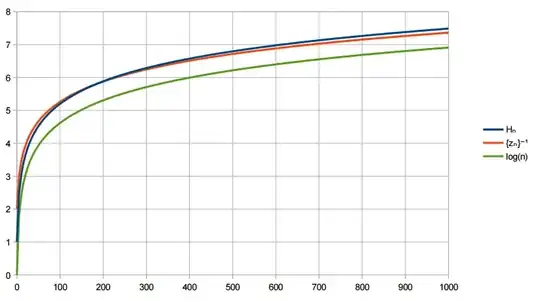The gamma function has just one extremum on each interval $(k,k+1)$, where $k$ is a negative integer. These extrema occur at the zeros of the derivative of the gamma function. Let $z_n$ denote the $n$-th greatest zero, or the zero found on the interval $(-n, -n+1)$.
As $n$ grows, $z_n$ nears $-n$. In other words, $z_n+n=\{z_n\}=z_n-\lfloor z_n\rfloor$ nears $0$. I have numerically found $\{z_n\}^{-1}$ to be asymptotically equivalent to $\log(n)$:

Here's the kicker, though. It seems that $\lim\limits_{n\to\infty}\left(\{z_n\}^{-1}-\log(n)\right)\approx 1-\gamma$.
I appear to be reaching the limits of double precision. At $n=1754$, I start getting (presumably) wildly inaccurate values for $z_n$. If my approximations can be trusted before this point, however, then $\{z_n\}^{-1}-\log(n)+\gamma$ decreases and reaches about $1$ at $n=1713$, but continues decreasing below $1$. If this is truly the case, then the claim in the previous paragraph is not a strict equality.
Does anyone know of a proof of $\{z_n\}^{-1}\sim\log(n)$ or if $\lim\limits_{n\to\infty}\left(\{z_n\}^{-1}-\log(n)\right)= 1-\gamma$ is true? I welcome any analytical or numerical evidence hinting at the confirmation or negation of either of these two statements.
I myself know next to nothing about the gamma function or its relatives, but I noticed the zeros drifting left on their intervals and decided to investigate.